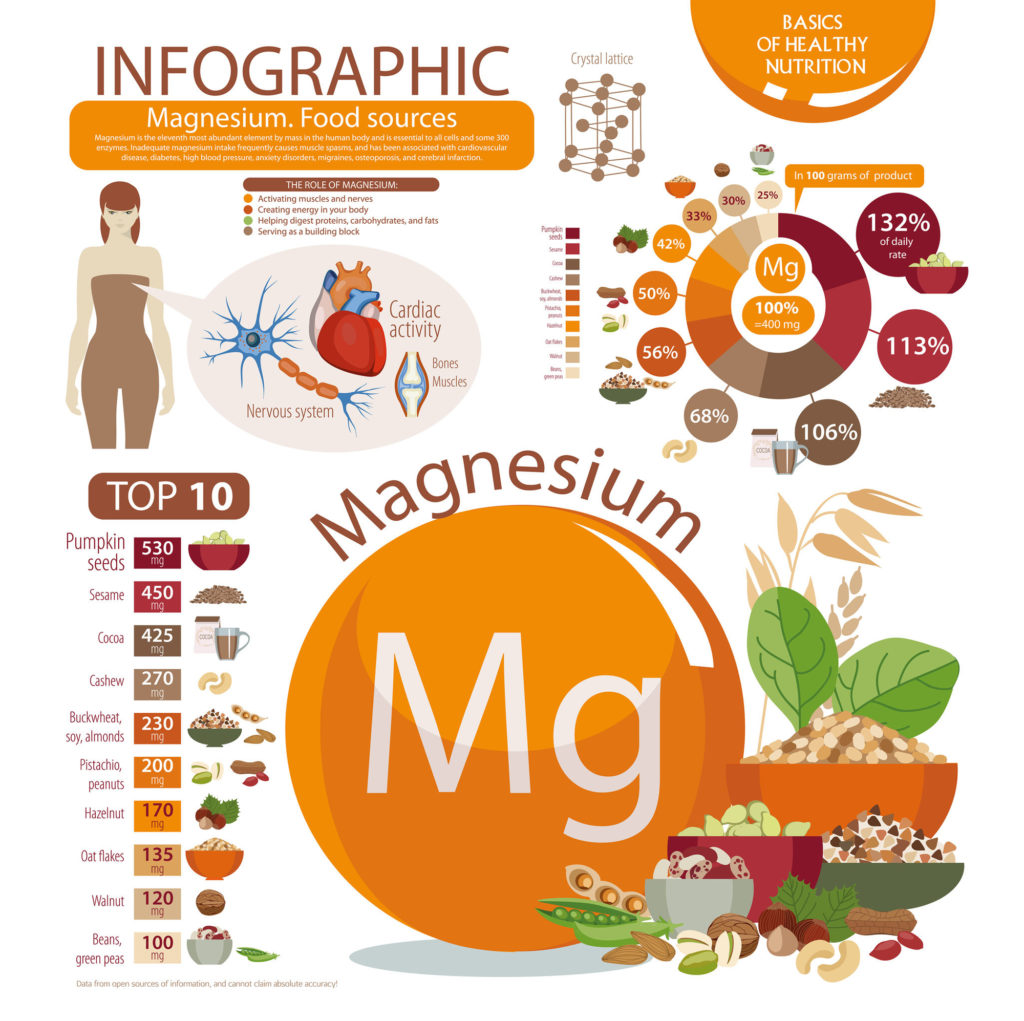
Why You're Unknowingly Depleting Your Body’s Magnesium Levels, according to a Functional Medicine Doctor and an RD
Share
“Magnesium is responsible for over 300 processes in the human body,” says functional medicine doctor Kien Vuu, MD. Nearly every organ system requires magnesium to function at an optimal level, so it’s particularly troubling that researchers estimate that roughly 75 percent of the U.S. population is deficient in magnesium.

Functional medicine doctor Mark Hyman, MD recently shared that, in addition to the fact that many of us don't get enough magnesium in our daily diets, there are a few ways we could be unknowingly depleting what little magnesium stores we do have. "Much of modern life conspires to help us lose what little magnesium we do get in our diet," Dr. Hyman said on his Instagram. "Magnesium levels are decreased by excess alcohol, salt, coffee, phosphoric acid in colas, profuse sweating, prolonged or intense stress, chronic diarrhea, excessive menstruation, diuretics (water pills), antibiotics and other drugs, and some intestinal parasites."
This is valuable advice, because it gives us the opportunity to take action. The three key ways that Dr. Hyman recommends we stop unknowingly draining our bodies of magnesium include limiting intake of coffee, cola, salt, sugar, and alcohol; learning how to practice active relaxation; and checking with your doctor if your medication is causing magnesium loss. "Many high blood pressure drugs or diuretics cause loss of magnesium," Dr. Hyman adds.
To learn more about the ways we could unknowingly be depeteling our body’s magnesium levels and what we can do about it, we tapped a registered dietitian for her expert intel.
Magnesium malabsorption, which can be caused by a medical condition or procedure
According to Brookell White, MS, RD and MyFitnessPal nutrition consultant, this is common in people with a gastrointestinal disease or who have had a GI procedure, because chronic diarrhea and fat malabsorption are common symptoms and can lead to magnesium depletion. “Some conditions where this is common are Crohn’s disease, celiac disease, chronic inflammation of regions of the gut, and a resection or bypass to the upper region on your gastrointestinal tract,” White says.
Alcohol dependance
Many ailments caused by chronic drinking contribute to the loss or malabsorption of magnesium. “This includes poor intake of magnesium, vomiting, diarrhea, issues with fat absorption, increased loss in your urine, and other nutrient deficiencies that further malabsorption of magnesium," explains White. And we’re not just talking about binge drinking—according to White, even moderate alcohol intake can contribute to magnesium deficiency.
Chronic stress
Hormones are often released in the body as a response to stress, leading to an increase of magnesium outside our cells. “When this happens, more magnesium is excreted in our urine, leading to more loss. If this is repeated over time, this may lead to lower levels of magnesium,” says White. She suggests keeping a consistent workout regimen, prioritizing time to wind down before bed, and eating a balanced diet as a way to combat this.
Age
While we can try to be proactive about managing things like alcohol consumption and stress, this one is a bit trickier. Magnesium absorption from the gut decreases over time, and this happens at a faster rate as we get older. “The kidneys also excrete more as we age, and older adults are found to consume less,” says White. “Another contributing factor may be due to medication. Diuretics, antacids, proton pump inhibitors, and aminoglycoside antibiotics are just some of the medications that can lead to a magnesium deficiency, and many of these are unfortunately more frequently prescribed to older populations.”
Again, Dr. Hyman also singles out other causes including excess salt and coffee, profuse sweating, and menstruation. In addition to limiting these triggers and speaking with a doctor about magnesium deficiency, you can also introduce more magnesium-rich foods into your diet to up your body's magnesium levels. Remember: It’s not all about cutting and changing—a big part is adding.
Foods rich in magnesium
Magnesium is found in a variety of foods, especially those that contain everyone’s favorite digestive booster, fiber. “These foods include nuts, leafy green vegetables, legumes, and whole grains,” says Dr. Vuu. He calls out spinach, cashews, peanuts, soy milk, and black beans as being high in the mineral.
According to White, a “good source” specifically refers to a food that contains at least 10 percent of the dietary reference intake (DRI), a group of reference values to determine sufficient and insufficient intake. “Other sources include dairy, meat and fortified cereals.” Keep in mind that the recommended intake for adults is 400 mg for men and 360 mg for women ages 19-30, and 420 mg for men and 320 mg for women ages 31 and up.
